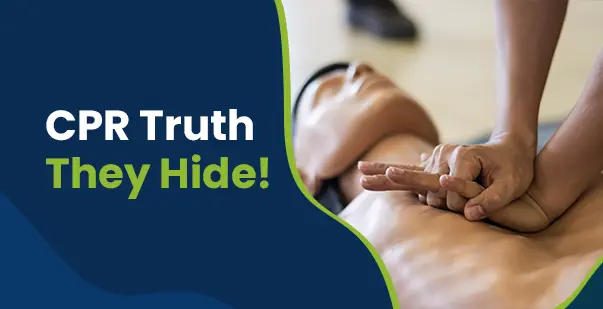Have you ever hesitated to do CPR, fearing you would break someone’s ribs? It’s a common concern that stops many potential rescuers. So, does CPR break ribs? Yes, it can. Chest compressions need to be deep and strong to pump blood through the body, and that pressure can lead to rib fractures, especially in older adults or those with fragile bones. While this might sound scary, it’s important to understand that a broken rib is a small price to pay when a life is on the line.
CPR saves lives every day, and knowing what to expect, including the risks, helps more people step in confidently when it’s needed the most. Keep reading to know more.
Master ACLS Now
Get ACLS certified with confidence
Can CPR Cause Rib Fractures?
The short answer is yes, CPR can break ribs. The forceful nature of chest compressions during CPR often results in rib fractures, but this physical consequence should not deter rescuers from performing this life-saving procedure. This happens more often than many people realize. Studies show that rib fractures from CPR occur in 55% of cases based on the patient’s age, bone density, and how CPR is performed. Below are the common factors that contribute to rib fractures during CPR:
Depth and Force of Compressions
When someone’s heart stops beating, chest compressions are used to keep blood flowing to the brain and other organs. But to actually make a difference, the compressions have to be deep, about 2 to 2.4 inches (5 to 6 centimeters) down into the chest.
Pushing that deep takes a lot of force, usually around 100 to 120 pounds, and it has to be done fast, about 100 to 120 times every minute. That’s a lot of pressure on the chest.
Because of this, it’s common for ribs to crack or even break during CPR, especially in older adults who have more fragile bones. It might sound scary, but broken ribs are better than a stopped heart, and CPR can save a life.
Advanced Age and Bone Fragility
Elderly patients have a much higher risk of experiencing rib fractures from CPR. Their bones have usually lost density and become more brittle with age. Studies show that patients over 65 may experience rib fractures in up to 93% of CPR cases. However, children with more flexible rib cages experience far fewer fractures.
Post-CPR Fracture Detection
Many rib fractures from CPR aren’t detected during the emergency but are discovered later through chest X-rays or autopsies. Rescuers might feel or hear a crack during compressions, but it’s not always obvious. The need for deep and forceful compressions to keep blood flowing makes rib fractures a known and accepted risk during CPR. It’s a difficult trade-off, but broken ribs are often a necessary consequence of trying to save a life.
Read more: When Do Pauses in Compressions Occur During CPR
Why Rib Fractures Occur During Chest Compressions
The mechanics of effective CPR require significant force applied to the chest wall, which creates pressure that often exceeds what human ribs can withstand without breaking. The rib anatomy and the mechanism mentioned below explain the relation between chest compressions and broken ribs:
The Anatomy of the Rib Cage
The rib cage is made up of 12 pairs of ribs that connect to the spine in the back and to the breastbone in the front with flexible cartilage. It works like a flexible but protective cage around the heart and lungs. It’s made to expand and contract as we breathe, but it’s not really built for someone pressing down hard and fast on it. During CPR, the middle ribs, usually numbers 3 to 7, take most of the hit. As they are right under where the hands are placed, they are the most likely to break under pressure.
The Mechanics of Compression
For CPR to work, the heart must be compressed between the sternum and the spine. This creates the pressure needed to pump blood. These compressions have to be hard and fast to keep blood pumping, about 2 inches deep and over 100 times per minute! That’s a lot of pressure on the chest, and it’s this force that can sometimes cause ribs to crack.
Compression Force vs. Bone Strength
Research shows that the force needed for effective CPR (100-120 pounds) often exceeds the fracture threshold of human ribs, especially in elderly patients. The sternum itself may crack, but more commonly, fractures occur where the ribs meet the cartilage near the sternum.
Incorrect Hand Placement
Where you put your hands during CPR really matters. The correct spot is the center of the chest, right on the lower half of the breastbone. If your hands are too high or off to the side, you might end up pressing directly on the ribs instead of the sternum, which raises the chances of a fracture. Proper technique can help reduce injury, but even perfect hand placement isn’t a guarantee.
Multiple Rescuers or Prolonged CPR
If CPR has to be done for a long time or if multiple people take turns doing compressions, the chance of rib fractures increases. That’s because the chest is being pressed on over and over again, sometimes by people with slightly different styles or strengths. Over time, that repetition wears down the ribs and makes breaks more likely.
Should You Stop CPR If You Hear a Rib Break?
One of the most common questions about CPR involves what to do if you feel or hear ribs breaking, or is it normal to break ribs during CPR? The clear medical consensus: do not stop CPR. Rib fracture happens frequently and should not deter rescuers from continuing life-saving efforts.
When performing chest compressions, the sound of cracking ribs might startle rescuers, but continuing CPR is important as the alternative means certain death for the victim.
The Priority of Circulation
When someone’s heart stops, the immediate priority is restoring circulation. A broken rib will heal, but brain death from lack of oxygen cannot be reversed. When faced with the choice between possible rib fractures from CPR and certain death without it, the decision becomes clear.
Mental Preparation for Rescuers
First-time rescuers should be mentally prepared for the possibility of feeling or hearing ribs crack. This sensation can be disturbing, but remember that you’re giving someone their only chance of survival. The sound or feeling of a breaking rib simply means you’re providing compressions deep enough to be effective.
Minimizing Injury While Performing Effective CPR
Proper hand placement and technique during chest compressions can enormously reduce the risk of rib fractures while still delivering the force needed to circulate blood. Below are the points you can consider to minimize the injury while performing effective CPR:
Correct Hand Position
Proper hand placement is crucial for minimizing injury risk. Position the heel of one hand on the center of the chest (the lower half of the sternum), place your other hand on top, and interlock your fingers. Avoid placing hands too low on the sternum or to either side, as this increases the risk of rib fractures from CPR.
Body Mechanics for Rescuers
Use your body weight rather than arm strength to deliver compressions. Position yourself directly over the person’s chest with arms straight, and use your upper body weight to press down. This delivers more consistent force and reduces rescuer fatigue.
Compression Depth vs. Safety
Finding the balance between adequate depth and safety remains challenging. The current recommendation is to press down at least 2 inches but not more than 2.4 inches in adults. Going deeper increases fracture risk without improving blood circulation. For children, compress approximately one-third of the chest depth, while infants require a shallower depth of about 1.5 inches (4 cm).
After successful resuscitation, carefully roll the person onto their side (recovery position) if they’re breathing but unconscious. This prevents further pressure on potentially broken ribs.
Other Potential Injuries from CPR
Rib fractures represent the most common, but not the only, potential injury from CPR. Beyond rib fractures, CPR can cause various internal injuries ranging from mild to severe. Being aware of other possible injuries from CPR helps rescuers and medical professionals provide appropriate follow-up care. Following are some other potential injuries from CPR:
Sternal Fractures
The sternum (breastbone) may fracture during compressions in approximately 14-30% of cases. These fractures typically heal well but can cause pain during recovery. Like rib fractures from CPR, sternal fractures occur more frequently in elderly patients.
Lung Injuries
When ribs break, they can puncture the thin membrane surrounding the lungs. This condition, called pneumothorax, allows air to leak into the chest cavity and may cause a lung to collapse.
Cardiac Contusions
The force of chest compressions can bruise the heart muscle. While less common than bone injuries, these contusions may affect heart function temporarily. Medical monitoring after resuscitation helps identify and address these injuries.
Aspiration Pneumonia
This condition can occur if gastric contents are aspirated into the lungs, particularly if the patient vomits during or after CPR. It poses a significant risk to recovery and can lead to severe respiratory complications.
Internal Organ Damage
In rare cases, CPR complications may include damage to the liver, spleen, or stomach. These injuries occur in less than 1% of cases but require medical attention when they do happen. The risk increases with improper hand placement during compressions.
The Importance of Proper CPR Training
Bystanders trained in CPR are nearly twice as likely to provide life-saving assistance during cardiac arrest, significantly improving survival rates (American Heart Association, 2023). Trained rescuers tend to deliver better compressions while minimizing unnecessary injuries. The following are the reasons why proper CPR training is important:
Builds Hands-On Skill and Muscle Memory
Training courses provide hands-on practice with mannequins that give instant feedback on compression depth and rate. This helps rescuers develop muscle memory for delivering the right amount of force that is enough to circulate blood without causing excessive damage.
Increases Confidence to Act
Many bystanders hesitate to perform CPR due to fear of causing injury or doing it incorrectly. Proper training builds confidence. It makes rescuers more likely to act quickly in emergencies. This is because any attempt at CPR is better than no attempt at all when someone’s heart has stopped.
Prevents Common Mistakes
Certified instructors can teach nuances that videos or written instructions might miss. They demonstrate proper body positioning, hand placement, and compression technique while addressing common mistakes that might increase the risk of broken ribs during CPR.
Keeps You Updated
CPR guidelines evolve based on new research. Recertification every two years ensures rescuers stay up-to-date with best practices. Recent changes include emphasizing compression depth and minimizing interruptions to chest compressions.
Read more: Can You Perform CPR Without Certification?
Saving Lives vs. Risk of Rib Fractures!
CPR does break ribs, but this should never prevent someone from performing this life-saving procedure. When someone’s heart stops, their chance of survival depends on immediate action. Without CPR, death is almost certain. In comparison, the risk of broken ribs or other CPR complications is although crucial but less significant. Most survivors never complain about broken ribs when the alternative is death.
When cardiac arrest occurs, time is the enemy, and CPR is your best weapon. Hence, do not let fear of causing injury prevent you from taking action. To ensure positive outcomes, get accredited basic life support (BLS) training and stay prepared to save a precious life.
References:
- https://www.cprlittlerock.org/rib-fractures-during-cpr-causes-complications-and-mitigation/#:~:text=During%20CPR%20%28Cardiopulmonary%20Resuscitation%29%2C%20rib%20fractures%20can%20occur,procedure%2C%20and%20the%20benefits%20outweigh%20the%20potential%20complications.
- https://aclsnow.com/blog/does-cpr-break-ribs/
- https://www.cprcertified.com/blog/what-happens-if-ribs-break-during-cpr
- https://heartstartcpr.net/does-cpr-break-ribs/







